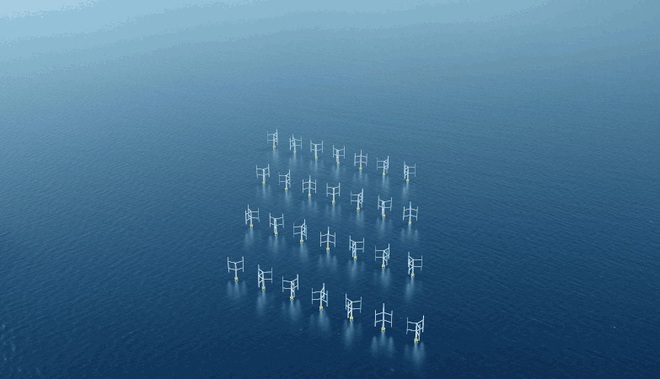This will be the “new normal” for wind farms. Pinwheel wind turbines may soon be replaced by more efficient systems: vertical wind turbines with high efficiency when grouped together.
New research from Oxford Brookes University shows that in large wind farms, designing vertical turbines that work in pairs will increase the efficiency of power generation by up to 15%. The team from the Department of Engineering, Computer Science and Mathematics (ECM), led by Professor Iakovos Tzanakis, studied the turbine model in a simulated environment for more than 11,500 hours to arrive at new conclusions.
They discovered that vertical axis wind turbines (VAWT) are much more efficient than traditional wind turbines, the horizontal axis wind turbine (HAWT). The VAWT rotates around an axis vertical to the ground, and the turbines are most efficient together when assembled in a grid system. The location of each wind turbine on a wind farm is as important as the giant wind turbine itself.
“This study is proof that future wind farms should be vertical,” said Professor Tzanakis. VEWTs can be placed close to each other, thus increasing their performance and ultimately helping to reduce electricity costs. In the long run, VAWTs can help accelerate the transition to green energy.
According to the Global Wind Energy Report 2021, we need to triple the rate of installation of domestic wind farms over the next decade to achieve carbon neutrality and reduce the damage of climate change. .
“Modern wind farms are among the most efficient ways to generate clean electricity available to us, but they have a major design flaw: When the wind hits the first row of wind turbines, air turbulence sets in. product. They damage the performance of the back rows of turbines, ”said lead author of the report, Joachim Toftegaard Hansen.
New research from the University of Oxford Brookes is the first detailed analysis of wind turbine performance, taking into account aspects such as wind intake angle, direction of turbine rotation, turbine placement and the optimal number of rotors. It is also the first scientific report to demonstrate the efficiency of a systematically placed vertical VEWT turbine array.



